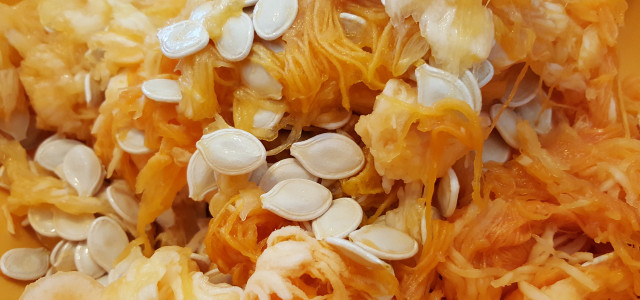Vegetable scraps like pumpkin seeds, carrot peels and radish leaves don’t often make it onto our plates. Most of the time they end up in the garbage. Do they really need to? We’ll show you some creative ways to reuse vegetable scraps leftover in the kitchen.
It’s a fact – we’re all collectively responsible for food waste. Producers discard items which don’t fit the market profile in appearance, distributors and supermarkets sort and throw away food themselves. Last but not least, we consumers toss anything out that “isn’t good anymore”, or whatever we think can’t be used. This is quite often the case with wilted greens and leftover peelings – vegetable scraps, which you can reuse a lot more easily than you’d think.
Enacting change when it comes to producer and distributor practices in dealing with food isn’t always easy. A handful of countries including France and the Czech Republic have made attempts to ban supermarkets from discarding edible food. Then again, we consumers can easily make sure less food ends up in the garbage.
Step one: A more relaxed approach to best-before date consumption and making sure the food we take home is stored properly. Step two: Ask yourself the following question: Do I really need to throw this away or can it be used somehow, someway?
We waste a lot of good food for the sole reason that we are unaware of its reusable properties. You can creatively reuse an entire bounty of lean-kitchen vegetable scraps such as radish greens, potato peels, melon seeds or cauliflower stalks – you name it. Here are just some ideas for putting kitchen scraps back onto your plate.
1. Turn Vegetable Scraps Into Broth or Soup
Take those piles of leftover veggie peels and off-cuts and make yourself a tasty vegetable broth. You can use carrot, cucumber and asparagus peelings or even onionskins, the outer leaves of cabbage and leeks, cauliflower leaves and stalks, broccoli stalks, stems of herbs as well as the cut off ends of celery and zucchini.
Together with some additional herbs, salt and pepper, let these vegetable scraps simmer in a pot of boiling water for around an hour. When ready, use a colander or clean kitchen towel to remove the vegetables and voilà – you’re done! Transferring the broth to clean screw-top jars and storing them in a dark place will guarantee a shelf-life of up to a couple weeks.
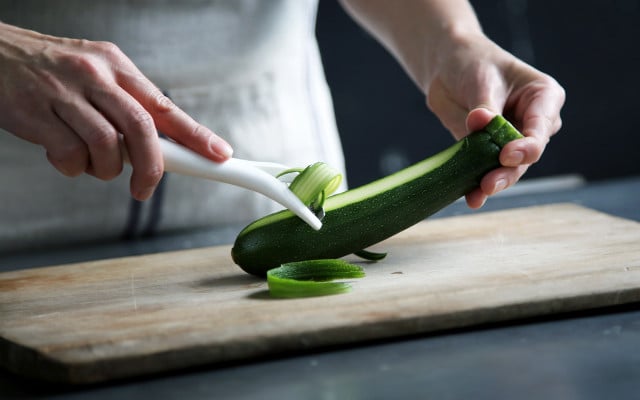
Reusing vegetable scraps can also be as easy as whipping up a simple soup. For this, use leftover cauliflower leaves as well as cauliflower and broccoli stalks. You can also reuse your asparagus peels to make a tasty asparagus cream soup.
2. Use Vegetable Scraps into a Smoothie
You can simply and easily process leftover veggie scraps (those which you can eat raw) right down into a smoothie: Mix together in a blender adding some water and any additional fruits, herbs, spices or a bit of ginger according to taste.
Some kitchen scraps that go great in smoothies are radish, carrot, beet root and daikon radish leaves, withered leaves of lettuce and herb stalks, etc. You can also make use of fruit past its freshest point: Partially browned bananas or slightly wrinkled apples serve as prime smoothie material. Smoothies make for a great vitamin-rich snack. Homemade smoothies made of leftover ingredients are also a lot healthier than the store-bought alternative.
3. Make Chips from Vegetable Peels
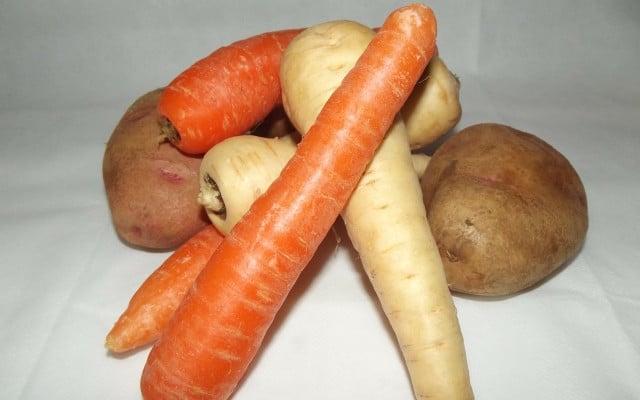


Fry up those washed (organic!) potato skins or roast them in a pan or oven. Add some salt and spice for a tasty and convenient snack. Please note: In order to avoid the harmful chemical solanine, you should only use fresh potato skins. Also keep an eye out for sprouts or green spots anywhere on the peels.
Sweet potato, beetroot and parsnip are also well-suited for veggie chips . Alongside these you can also use daikon radish as well as savoy cabbage and kale leaves. In order to ensure the peels you’re using are pesticide-free, remember to always buy organic.
4. Broccoli and Cauliflower Purée
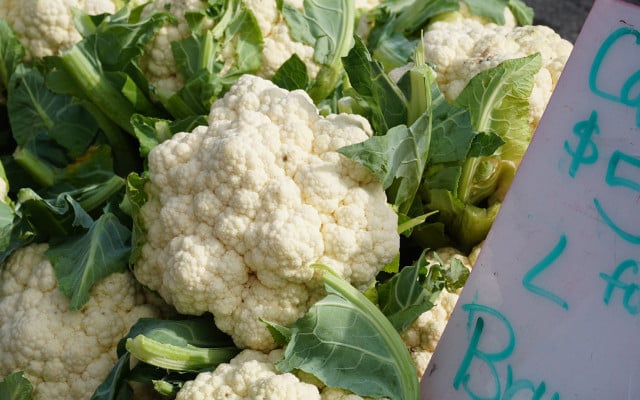


Make a simple and easy mash using vegetable scraps such as cauliflower stalks and leaves, broccoli or cabbage stalks. Simply cook until soft, purée, season and you’re finished. Potatoes go particularly well on the side.
5. Radish, Carrot and Daikon Radish Pesto
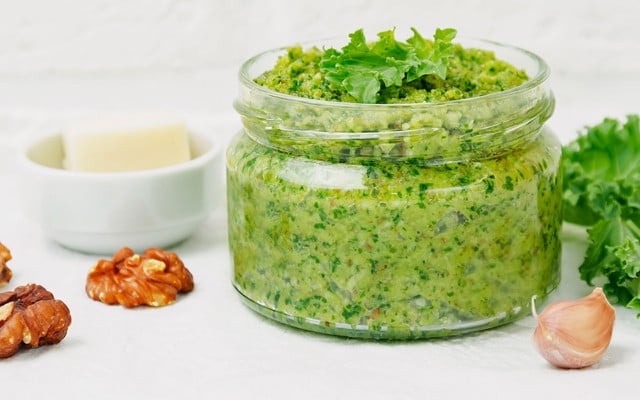


Radish, daikon radish and carrot greens don’t need to land in the trash – you can reuse them in a wide range of tasty recipes. Soups, leafy greens in salads, ravioli or lasagna fillings and even Pesto are just some ways to put these veggies bound for the garbage back on your plate. Check out our Pesto recipe.
6. Snack on Pumpkin, Melon, Apricot and Peach Seeds
There’s no need to send pumpkin, squash or melon seeds straight to the garbage. Neither do you need to discard smaller seeds found inside the peach or apricot cores: Toss them in the oven and roast them up. Either sweet or salty – both make for a tasty snack.
Please keep in mind: Only use sweet apricot seeds from cultivated apricots – the bitter ones can be harmful to your health. And don’t eat the seeds raw!
7. Lettuce Stalk Salad Dressing



Whip up a lean and tasty salad dressing by reusing leftover lettuce stalks, leaf veins or radish. You can also use daikon radish, carrot and kohlrabi greens. Simple purée these together and add your vinegar, olive oil and seasoning – or any other ingredients that fit your taste – and you’ve got yourself a delicious salad dressing.
8. Sauteed Beet Leaves
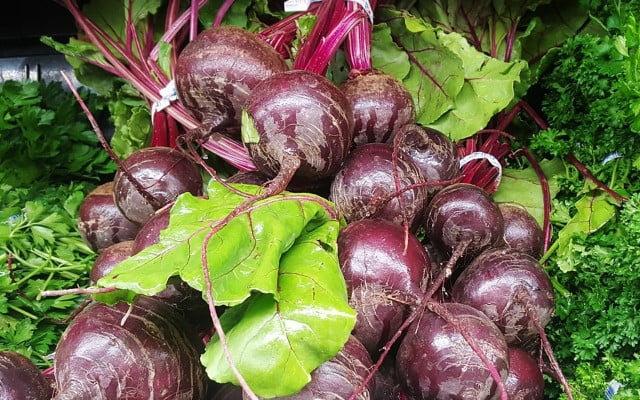


Most of the time beets are chopped up and added to a salad or soup. Surprisingly enough, beet leaves have plenty of further uses in a variety of different dishes. Beets are related to the sugar beet and chard and can thus be prepared in identical fashion.
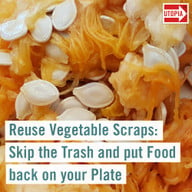


Want to avoid food waste and live more sustainably? Check us out on social media for more tips and tricks.
Read more:
- Homemade Pesto: Healthy, Easy-to-make Recipe in just 5 Steps
- Don’t Toss That Stale Bread! These Recipes Rely On It
- Homemade Vegetable Broth Recipe: Easy, Organic and with Freshest Ingredients
This text was translated from German into English by Evan Binford. You can view the original here: Resteverwertung: Was viele in den Müll werfen, kann man essen
** Links to retailers marked with ** or underlined orange are partially partner links: If you buy here, you actively support Utopia.org, because we will receive a small part of the sales proceeds. More info.Do you like this post?






